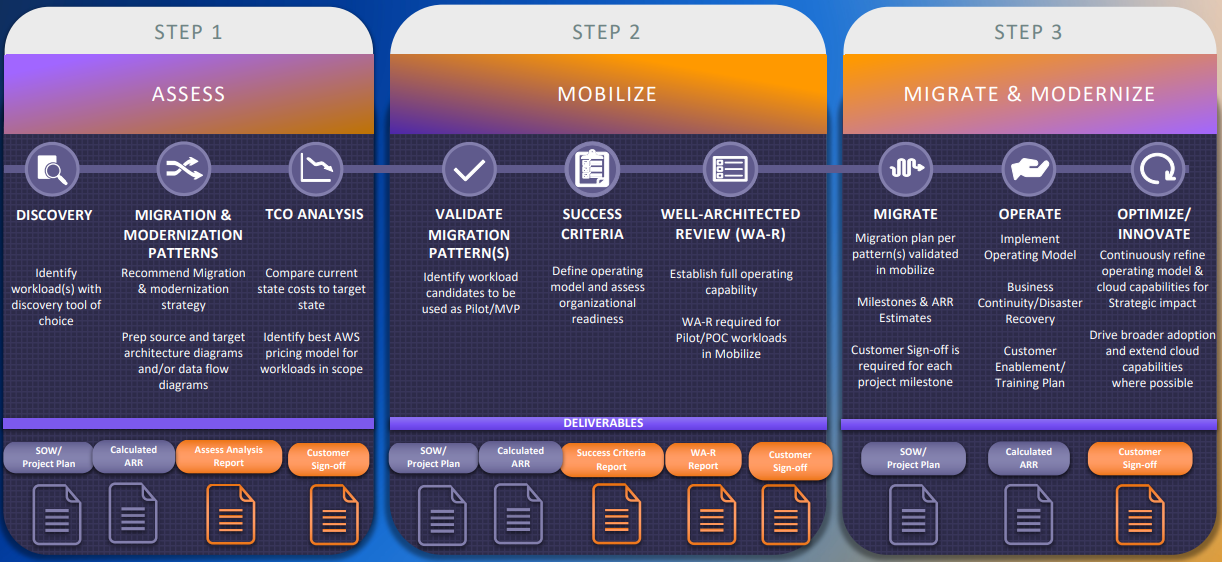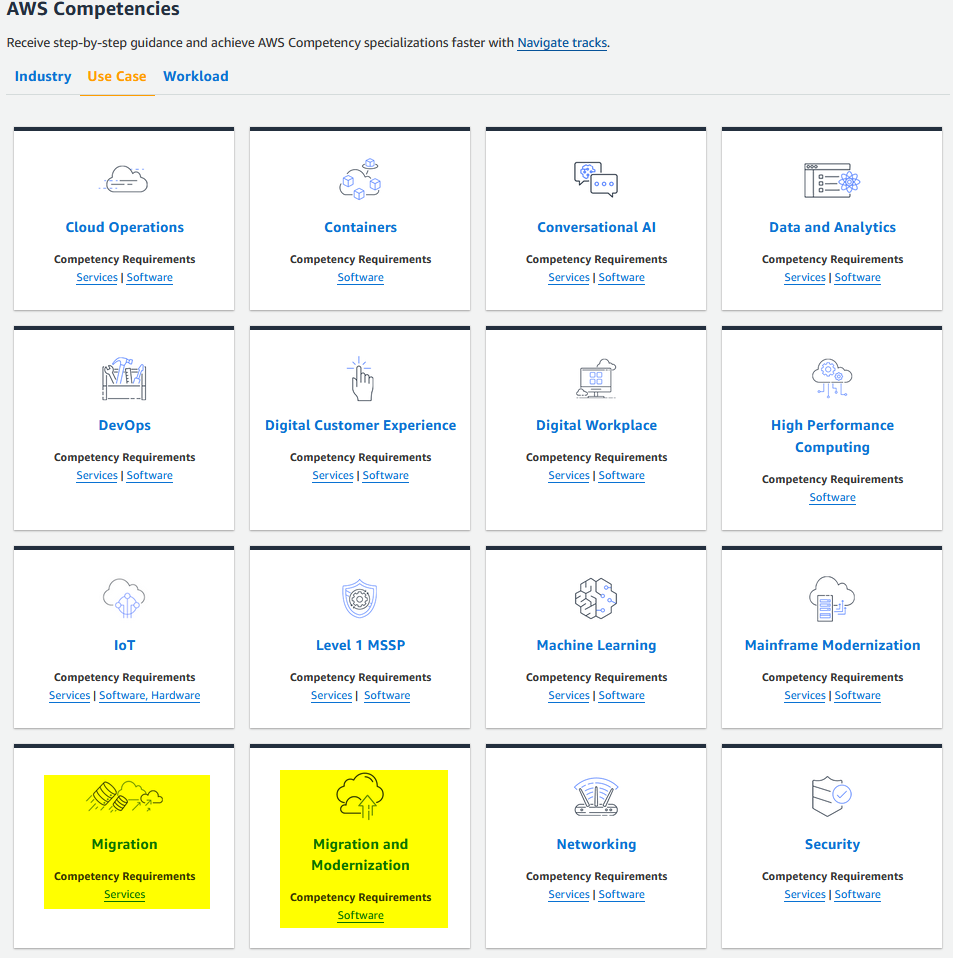Migration Acceleration Program (MAP): Accelerate customers cloud migration and modernization journey

This blog is for
- Enterprises Leadership teams , who are committed, and considering the migration of mission-critical workloads from on-premise data centres (or other cloud providers) to the AWS cloud.
- AWS Partners, to know, where is the meat for them in the program? In simple terms, how to utilize MAP to support and accelerate the cloud migration of an enterprise customer.
- AWS Solution Architects (or Engineers), to understand what role they can play in Migration Acceleration Program for an enterprise grade customer.
MAP Introduction
The AWS Partner Migration Acceleration Program (MAP) is a comprehensive and proven methodology based on AWS’s experience migrating thousands of enterprise customers to the cloud. MAP provides an excellent starting point to assist in the migration journey by speeding up the cloud migration and modernization by simplifying complicated and time-consuming tasks.
🗺️ AWS MAP (migration acceleration program) is not limited to navigation instead it’s your guide to the cloud migration journey!. 🌥️
The Migration Acceleration Program (MAP) offers an array of cost-saving tools, efficient execution automation, and tailored training programs that are backed up by the expertise of AWS Partner Network, a global partner community and funding from AWS. The program utilizes a proven three-phased framework (Assess, Mobilize, and Migrate & Modernize) to enable clients to achieve their migration goals. MAP’s solutions allow clients to establish a strong foundation in the AWS cloud, minimize risk, and accelerate the process while offsetting initial costs. Clients can leverage the cloud’s performance, security, and reliability to enhance their operations.
Common drivers (or motivation)
There are various reasons why organizations decide to migrate to the cloud. One of the most common reasons is to shift away from traditional data centers. Currently, one of the enterprise clients I am assisting aims to complete a lift-and-shift migration of their Oracle heavy workload from the data center within the next two years. Their primary drivers for this decision are their intention to exit the data center and the approaching renewal period for their Oracle licensing.
Additionally, cloud migration enables companies to enhance their business agility, streamline their workforce productivity, gain visibility into their operational costs, and reduce the risk of failures, outages, and downtime.
These enterprises often face numerous challenges while migrating to AWS Cloud, including high initial costs and operational complexities. To overcome these challenges, MAP offers consulting support, training, and service credits, aimed at reducing the risk of migration and building a strong operational foundation. These services are designed to help organizations to offset the initial costs of migration and ensure a seamless transition to AWS Cloud.
Benefits for Enterprises
- Enterprises can greatly benefit from migrating to AWS as it allows them to shift their focus from the unproductive task of maintaining existing systems and technical debt to concentrating on business innovation, which is crucial for long-term success and growth. By leveraging the cloud infrastructure and services provided by AWS, enterprises can streamline their operations, improve their scalability, and enhance their ability to respond to changing market demands.
- Previously, in order to launch a product quickly, it was often necessary to make sacrifices and difficult trade-offs. However, with advancements in technology and modern business practices, it is now possible to bring products to market efficiently without compromising on quality or making painful sacrifices.
- Rather than simply existing in the marketplace, enterprises can strive to distinguish themselves by leveraging new capabilities and technologies to gain a competitive edge.
How MAP Work?
The AWS Migration Acceleration Program involves three distinct phases.
1st phase – Assess the readiness
Before embarking on a migration project to the AWS Cloud, performing a migration readiness assessment (MRA) is important. The MAP assessment phase is designed to help identifying potential gaps in six key areas of the AWS Cloud Adoption Framework – business, people, governance, platform, security and operations. By performing this assessment, you can determine the necessary capabilities needed for a successful migration and develop your project’s comprehensive TCO (Total Cost of Ownership) model.
AWS CAF identifies specific organizational capabilities that are crucial to successful cloud transformations. These capabilities provide guidance to help you improve your cloud readiness. AWS CAF groups its capabilities into six perspective and each perspective comprises a set of capabilities that different stakeholders manage or own throughout the cloud transformation journey. You can use AWS Cloud Adoption Readiness Assessment Report to identify and prioritize transformation opportunities, evaluate and enhance your cloud readiness, and iteratively improve your transformation roadmap.
2nd phase – Mobilize your resources
During the mobilization phase, you lay the groundwork for your migration by addressing any capability gaps that were identified during the assessment phase. This phase is designed to streamline the migration decisions by providing you with guidance on migration plans that will enhance the overall success of the process. With the help of AWS Partner Solutions Architects and SMEs, you can validate migration patterns and identify workload candidates for the Pilot/MVP phase. Additionally, you establish success criteria by ensuring full operating capability based on the AWS Well-Architected Review (WAR).
3rd phase – Migrate & Modernize
During the Migrate and Modernize phase, AWS Migration Services, the AWS Professional Services team, and AWS Migration Partners collaborate closely with you to ensure the successful execution of the large-scale migration plan that was developed during the Mobilize phase. This involves various activities, such as identifying the correct migration tools and services, testing the migration process in a controlled environment, and providing guidance on optimizing your application architecture and infrastructure for maximum efficiency and cost savings in the cloud. Throughout the process, the AWS team works closely with you to provide support and expertise, ensuring that your migration is completed smoothly and with minimal disruption to your business operations.
As part of the Migration Acceleration Program, AWS offers financial incentives (funding) to support AWS customers in their migration process. These incentives are designed to offset the costs associated with migration, which can include expenses related to labor, training, and running two environments in parallel.
Program requirements for SI (Software Industry) and ISV (Independent Software vendors) Partners
AWS Partners are required to possess a migration consulting competency as a prerequisite to take advantage of the Migration Acceleration Program. AWS validates and promotes AWS partners that have demonstrated technical proficiency and proven customer success in specialized areas across industries, use cases, and workloads. AWS partners undergo rigorous technical and business verification by AWS and third-party auditors, including AWS WAF validation and review by AWS Partner SAs and AWS Product teams. Attaining an AWS competency helps partners to market and differentiate their business from other Partners by showcasing migration skills to AWS customers. Having an AWS competency designation gives customers full confidence in choosing the right AWS partner to team up with.

MAP 2.0 resources for partners
The AWS Migration Acceleration Program (MAP) offers its partners a range of valuable resources to help them advance their AWS MAP practice. In the APN Navigate Program, partners can access the “Migration to AWS Course,” a comprehensive training initiative that equips them with the knowledge and skills needed for successful migration to AWS.
AWS provides the “Migration Immersion Day” a publicly available hands-on experience for partners to deepen their understanding of AWS migration solutions and best practices.
The “Migration Game Day” offers a unique approach to learning by gamifying various migration scenarios to the AWS Cloud. It comprises two variants: the first focuses on a fictional 3-tier application migration, while the second, known as “AWS Migration and Modernization – Level 400,” delves into advanced migration concepts.
The “Migration Black Belt” (nicely explained by a Migration Black Belt) program is a specialized, long-term training initiative designed for AWS Partners. It requires no ongoing commitment from AWS Partner resources. In this program, technical resources are designated by AWS Partner Development Managers, who meet every six months for in-depth sessions on migration and modernization within the AWS Cloud. Participants gain hands-on experience through labs, immersion days, and Game Days while staying up-to-date with the latest AWS tooling and practices.
To maintain their place in the Black Belt program, participants must achieve specific milestones, such as earning new certifications, delivering Migration Immersion and Game Days for end customers, or contributing public content like blog articles or videos on migration topics.
Within AWS perspective guidance (APG), Migration Tool Comparison is a new offering from AWS that provides a comprehensive platform to help partners and customers find, compare, review, and select the right migration tool. This tool lets you efficiently filter the results based on the interests, requirements and use-case. Whether looking for a tool to migrate your applications, databases, or infrastructure, the Migration Tool Comparison tool can help you make an informed decision by providing detailed information and insights on the available options. It’s a great way to save time and effort in your migration journey while ensuring you choose the right tool for your business.
AWS competency partners in consulting and technology are collaborating and building joint solutions in AWS migration practices and offerings to accelerate migrations to the AWS cloud.
Conclusion
Leveraging AWS cloud services and adhering to best practices through AWS MAP offers advantages to multiple stakeholders:
- Enterprises dedicated to cloud migration find it highly advantageous to utilize these resources and incentives, making it a compelling choice.
- AWS Partners can enhance their migration expertise by tapping into the wealth of partner resources, ultimately aiding their clients in achieving seamless cloud transitions.
- AWS Solutions Architects and Engineers stand to gain from gaining a holistic understanding of industry-leading migration methodologies and practices.